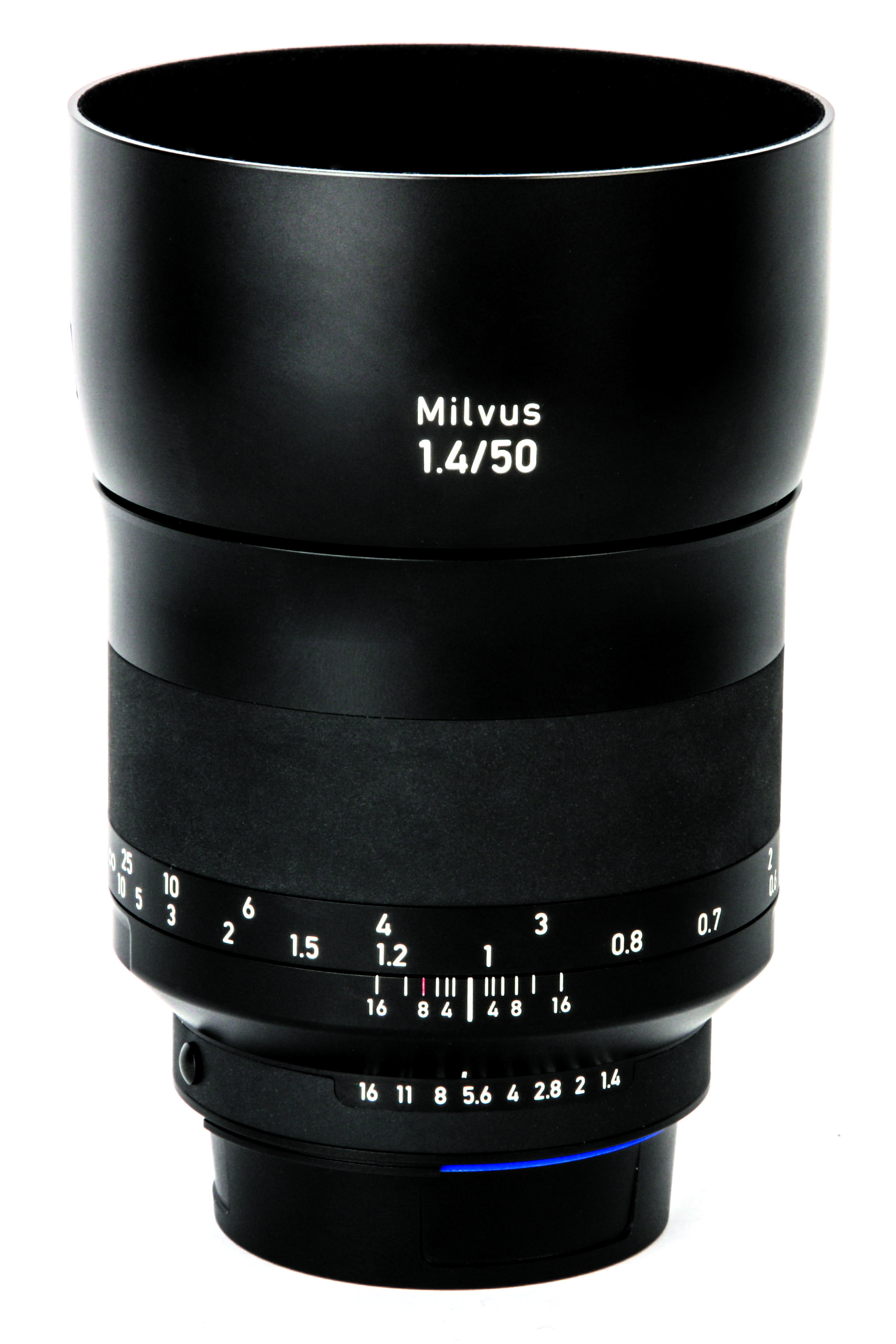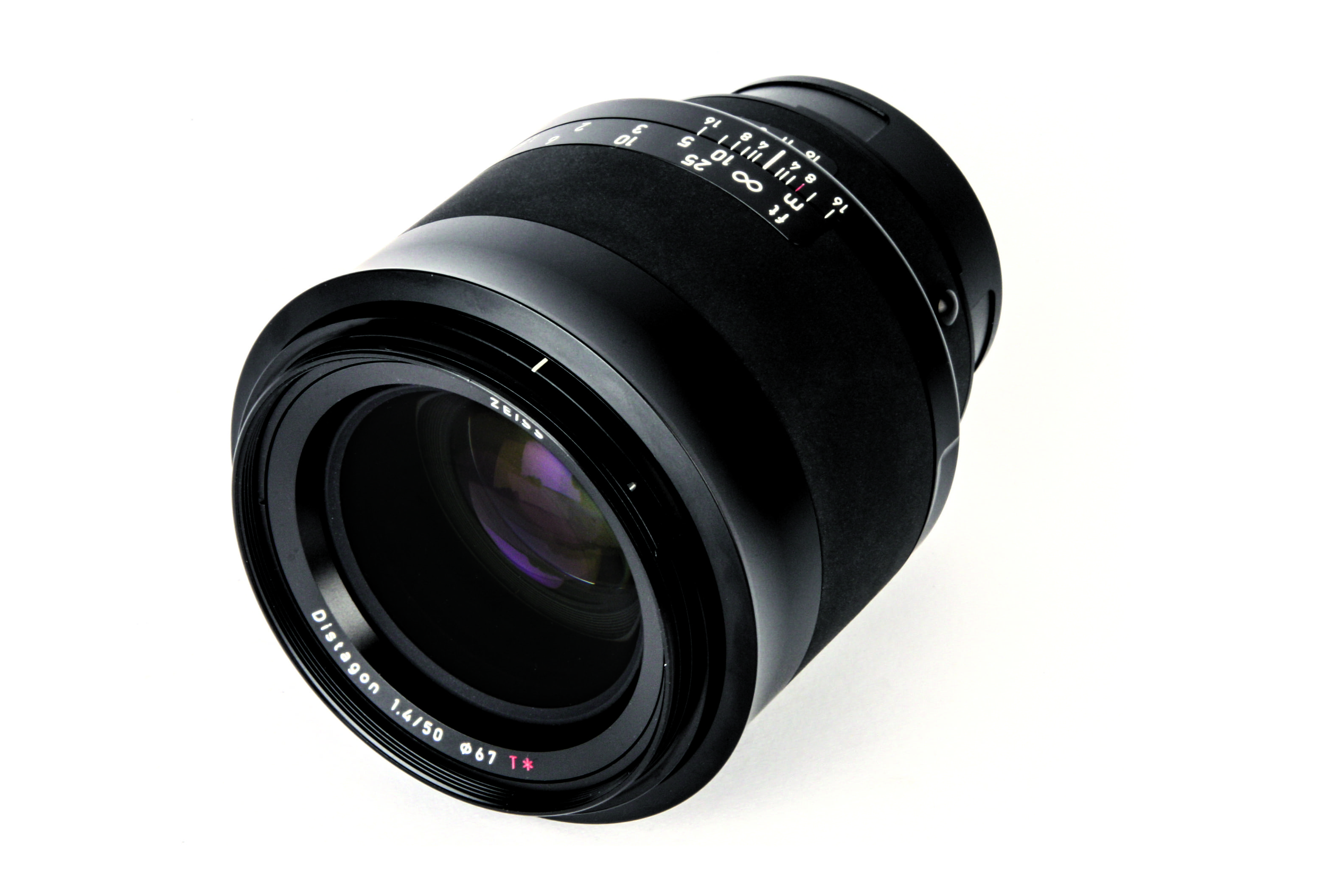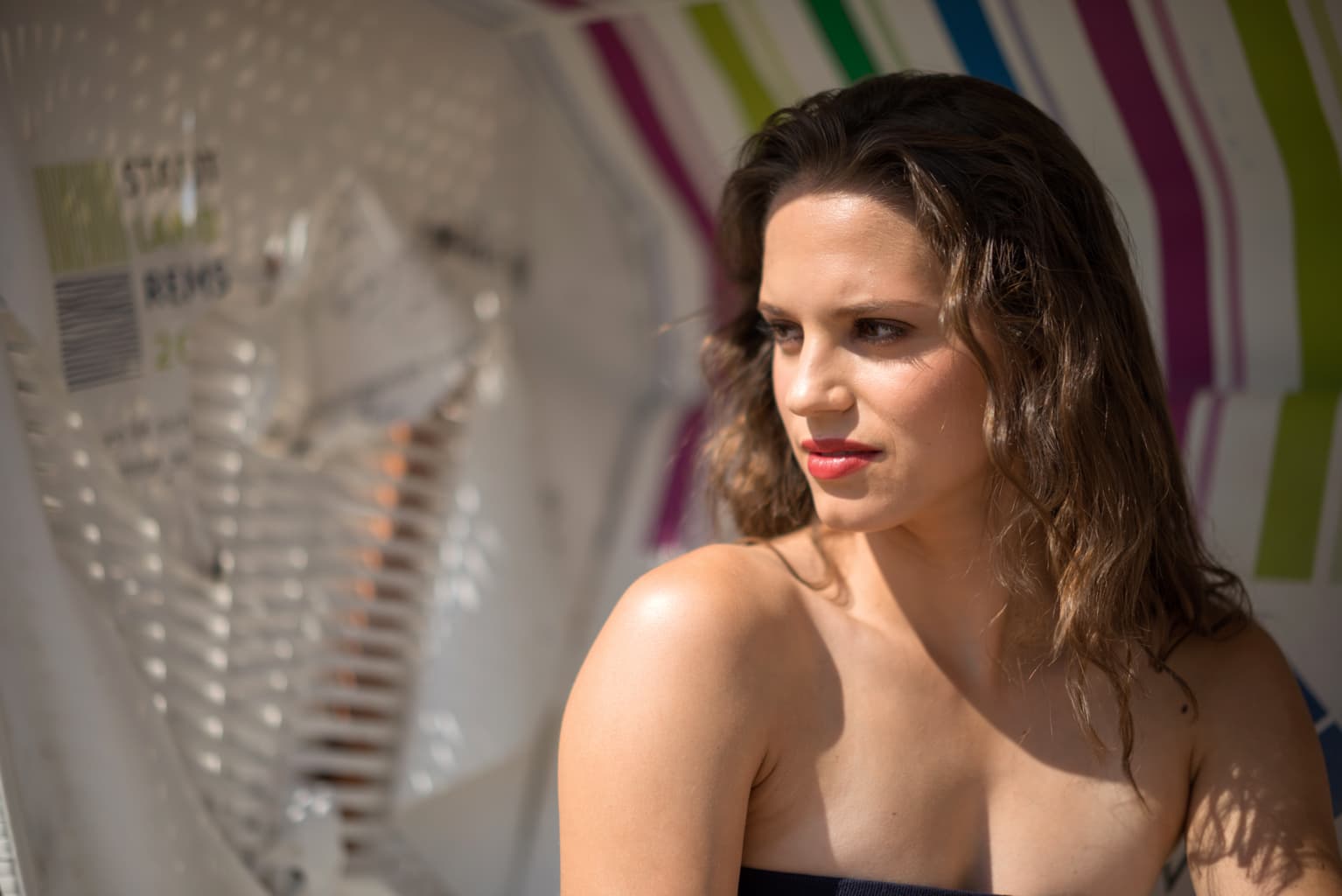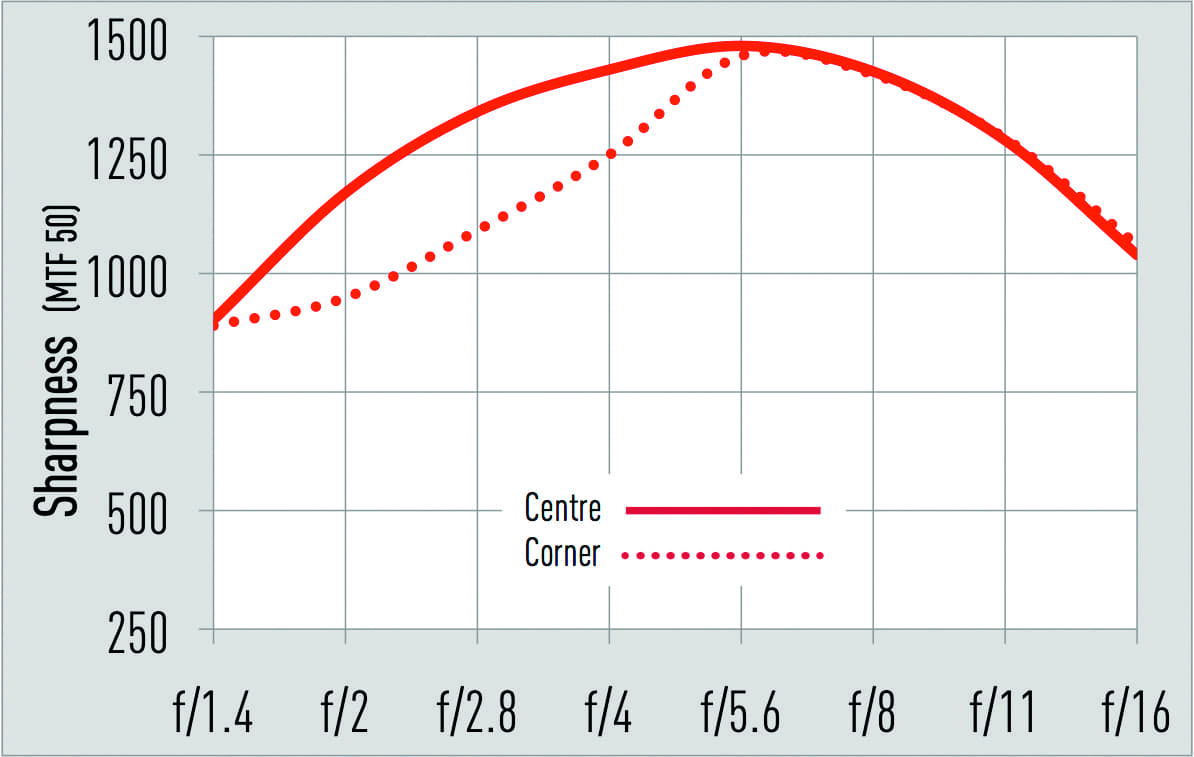Zeiss Milvus 50mm f/1.4 review: Introduction
If you’re happy with a maximum aperture of f/1.8, standard lenses for full-frame cameras are usually reasonably priced, of good quality and compact enough to avoid adding weight or bulk to your camera set-up. Recently, however, there has been a growing trend for faster standard primes that carry a premium in price, weight and size.
This Zeiss Milvus 50mm is one such lens – but it demands that premium and more. It’s a monster of a lens, with a vast forward element, a bulbous barrel and a weight that suggests it’s smuggling lead. For most of us these characteristics will be placed firmly on the negative side of the balance sheet, so a lens like this needs to offer something very special just to even out the scales, let alone put the unit in a positive light.
This 50mm is part of a new range of lenses from Zeiss. All manual focus and with a striking family resemblance, the range is designed for Nikon and Canon users, and they provide a covering circle extensive enough for full-frame sensors. While most of the Milvus family has been re-clothed and adapted from the previously existing Classic ZE/ZF.2 range, this 50mm f/1.4 and an 85mm f/1.4 are completely new optical designs. And the design of the 50mm f/1.4 needs to be pretty spectacular to make this lens worth the money.
Zeiss Milvus 50mm f/1.4 review: Features
The Carl Zeiss Milvus 50mm f/1.4 is a manual-focus lens designed for Canon and Nikon camera owners with full-frame or APS-C sensors. A T* accreditation lets us know that the brightness of exposure at any of the apertures will match exactly that of the same aperture on any other T* lens. This point is perhaps more important to videographers than for stills workers.
Zeiss has used ten elements in the construction, grouped into eight separate units, to create a retrofocal Distagon design, and has employed numerous special elements and surfaces to improve image quality. Six elements with aspheric surfaces are used, along with four in a low-dispersion glass that Zeiss calls ‘anomalous partial dispersion’ glass. This devotes itself to reducing the likelihood of colour fringes appearing along high-contrast edges.

The lens includes six elements with aspheric surfaces
Zeiss claims its correction of coma and spherical aberrations will ensure high-resolution capture right across the surface of the sensor. The T* surface coatings are designed to reduce flare and internal reflections so contrast can be maintained at a level that makes the most of the increasing dynamic range of modern imaging sensors – Nikon’s in particular.
The company goes to great lengths to reduce the likelihood of light bouncing around inside the lens, including manually coating the outer edges of each element with black pitch. This is a delicate process that I’ve been lucky to witness with my own eyes.
Zeiss Milvus 50mm f/1.4 review: Build and handling
I appreciate that this lens is a tool and as such its cosmetic aesthetic is unimportant to the purchaser driven entirely by logic. Few of us are unlucky enough to deny the attraction and importance of beauty, so I’ll mention here that this lens is, as are all Milvus lenses, very pleasing to the eye. It would have been easy to make a straight-up-and-down cylinder with glass in it, but the designers have gone to some lengths to make something beyond basic necessity.
The soft-sheen paint and wide rubber focus ring look fantastic, and the outline of the barrel and metal hood curve exquisitely. As you might expect, the whole machine is made from metal, which lends both weight and stability to the construction. Even the lens hood, unlike so many of today’s plastic versions, is solid and hard to the touch. There is soft, shallow-pile luxurious felt lining its interior surface.

As with all Milvus lenses, the 50mm f/1.4 is very pleasing to the eye
The hood is massive, being 44mm high, 90mm across and a full 1mm thick, but its shape is perfect for turning back on itself when the lens is not in use, and it fits beautifully, and protectively, over the front end of the barrel. The front end of the barrel fans outwards slightly as it covers the front element, which provides a comfortable gripping point when the lens is being held – even with gloved hands.
Being a lens intended for movies as well as for stills, the manual-focus ring is designed to be easy to handle. It is 22mm wide, and made of a rubber that sticks to the fingers without the need for ribbing. The focus throw is extensive to allow for the tiny adjustments that are necessary with a wide-aperture lens – it needs a rotation of about 220° to take us from the 45cm/1.5ft closest focus position to infinity. Focus markings, along with a depth of field scale, are engraved on the barrel.
I was using the ZF.2 Nikon-mount version of the lens, which is fitted with an aperture ring. The ring offers half-stop clicks between f/1.4 and f/11, and then a full stop to f/16, although body control of the iris allows 1⁄3EV steps to be used. The Nikon version also lets us de-click the ring so we can change aperture during filming without intruding on the audio track.
While the lens does all it can to make life very pleasant indeed, there is nothing it can do about the lack of accommodation modern DSLRs allow for manual-focus systems. It is almost impossible to focus by eye as the modern focus screen does nothing to assist, so we have to use the AF points and the focus confirmation dot in the viewfinder – or tripod-mounted magnified live view. The lens worked beautifully on my Nikon FM3A, though.
Zeiss Milvus 50mm f/1.4 review: Performance
Carl Zeiss lenses are known for their ability to resolve detail. That, and the build, is what you pay the premium for. I think it is safe to say that this 50mm Milvus is the sharpest lens we’ve tested for some time, and the sharpest by some distance. Its wide-open performance eclipses most other 50mm lenses when they are set at their optimal apertures, but when it is used at f/5.6 it is astonishingly good.

At f/11 we get crystal-clear detail and an extensive depth of field. You can count the hairs on the heads of the men and woman!
Corner resolution, although behind the centre between f/1.4 and f/5.6, again eclipses some other lenses when their centre resolution is measured, so while I can’t tell you that resolution is even across the frame at all settings, it doesn’t ever drop to anything less than ‘very good’. At all aperture settings, corner and centre resolution measurements are very similar, but they actually come together completely by f/4 and stay that way until f/16. Resolution peaks at f/5.6 and drops away to what we would normally class as ‘excellent’ at f/16. It really is very sharp indeed.

Even when shot wide open at f/1.4, the Milvus shows exceptional resolution that’s a match for modern high-resolution sensors. The main problem is focusing accurately enough
As with all fast lenses, corners don’t always receive the same amount of light as the middle of the frame. The effect is dramatic at f/1.4 but only remains so for a stop, as brightness is evened out by f/2.8. I found the brightness of the frame changes considerably as it lightens noticeably at f/2 and drops back down at f/2.8. The uneven illumination fools the matrix metering of the camera. The effect is that the middle of the frame actually gets darker at f/2, while the outer areas brighten up – like inverted vignetting.

Great edge performance means we can use edges without the worry of lost resolution. This image was shot at f/5.6, where the lens performs at its best
The absence of chromatic fringing is noticeable in images that have high-contrast edges, so trees can maintain their natural colour appearance without the interference of purples, blues and greens. It’s a joy to see such clean edges and not have to correct colour shifts and the grey-line hangovers they so often produce. This is the pay-off we get from the size of the lens and the lengthened light path. Edges this clean really are quite unusual.
I can’t tell you that the lens is completely free of curvilinear distortions, but you really have to test it hard to find them. The barrelling is so moderate that you need to find something very straight and shoot it right at the longest edges of the frame to be able to detect any deviance from normal.
Zeiss Milvus 50mm f/1.4 review: Resolution, shading and curvilinear distortion
Resolution
There is no word for the resolution of this lens other than ‘exceptional’. It performs as well wide open as most do closed to their optimal apertures, and at its own optimal aperture it is astonishing. Best at f/5.6, it is also excellent right through the aperture range. Rarely do we see fine-detail corner resolution matching centre resolution at all, let alone at a middle aperture like f/5.6.

Shading
Vignetting is dramatic at f/1.4, with 1.5 stops fall-off in illumination at the corners of the frame. It decreases slightly at f/2, but is for all intents and purposes gone by f/2.8 – or by f/4 for the particularly fussy. Again, this is an exceptional performance characteristic of a first-class lens.

Curvilinear distortion
For most of us there is no curvilinear distortion to talk about here. The amount of barrelling that exists is so small that only scientific users will need to take it into account, and the rest of us may not have fine enough increments in our correction software to remove it without introducing pincushion.

SMIA TV = -1.1E%
Zeiss Milvus 50mm f/1.4 review: Verdict
Whether you want this lens will depend on how much you are prepared to spend on a standard lens, and a manual one at that. If you decide that you don’t want to spend almost £1,000 on a standard lens it won’t be because this lens isn’t good value for money – just that it is a lot of money.

I began the test wondering how Zeiss could justify the asking price, despite its nice looks and quality build. I ended the test working out how much use I’d get from it if I bought one. It really is an exceptional piece of kit, and if sharpness, detail, clean edges and a delightful user experience are important to you, this lens was made with you in mind.
For moving subjects, your success will depend on your ability to focus quickly, or your acceptance of an all-encompassing depth of field. But for still subjects and tripod-mounted work there possibly isn’t a finer tool on the market. It is intoxicatingly good.








